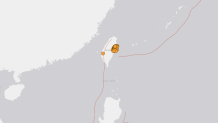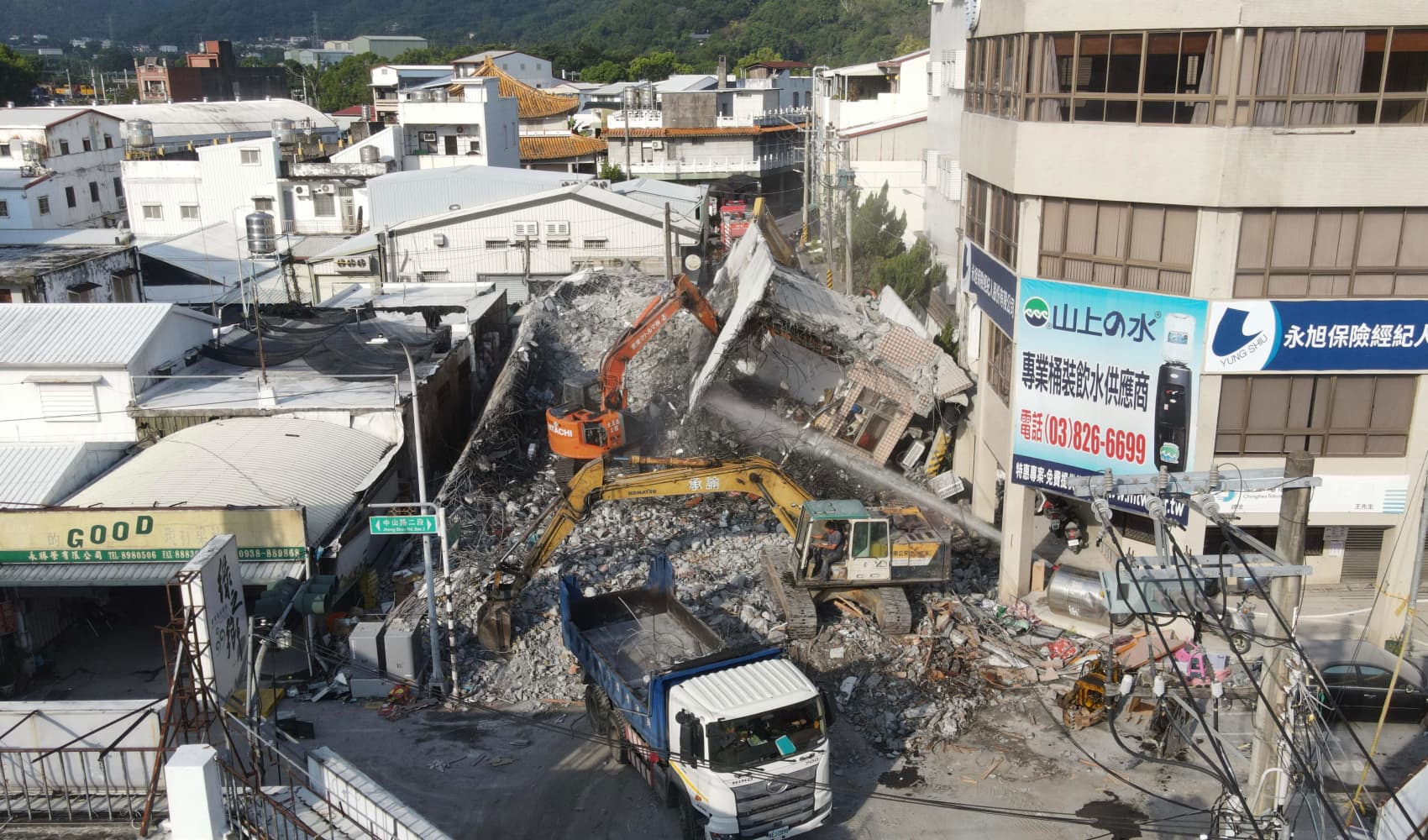Taiwan was struck Wednesday by its most powerful earthquake in a quarter of a century with powerful shaking in a region that shares at least one key similarity with Los Angeles.
At least nine people were killed and hundreds more were injured. The strong shaking damaged buildings and highways, and train service was interrupted.
Just like Southern California, Taiwan is no stranger to powerful earthquakes. But their toll on the high-tech island's 23 million residents has been relatively contained thanks to its excellent earthquake preparedness, experts say.
Here is a closer look at Taiwan’s history of earthquakes and a key similarity with Los Angeles.
Get Southern California news, weather forecasts and entertainment stories to your inbox. Sign up for NBC LA newsletters.
Similarities between earthquakes in Taiwan and Southern California
Taiwan is one of the world's most active earthquake zones with about 10 times the number of earthquakes as California.
There's at least one striking similarity between Southern California and the location of the shaking in eastern Taiwan from Wednesday's powerful earthquake. The area is a basin with a large city, and it's what's underneath that populated area that concerns seismologists.
"It's basically a big bowl of loose sediment that can amplify the shaking, just like Los Angeles," said seismologist Dr. Lucy Jones. "This is something we worry about for here."
The intensity of shaking from an earthquake depends largely on geology. Earthquakes may produce smaller or larger seismic waves, depending on different soils encountered as those waves travel.

The fault in the Taiwan quake is a thrust fault, meaning one side of the fault moves up and over the other. In the ocean, the water is violently displaced, which can result in a tsunami.
The devastating magnitude 6.7 San Fernando/Sylmar earthquake in 1971 and the deadly magnitude-6.7 Northridge quake in 1994 were on thrust faults.
"It looks like the fault actually ran right through the city," Jones said. "The only collapsing buildings I've seen are in Hualien. Some of them might be actually in a place where the ground underneath the building, one side is now up 10 feet compared to the other side. No building stands up through that."
Some buildings leaned at 45-degree angles, their ground floors crushed. Just over 93 miles away in the capital of Taipei, tiles fell from older buildings, and schools evacuated their students to sports fields, equipping them with yellow safety helmets. Some children covered themselves with textbooks to guard against falling objects as aftershocks continued.
The area near Hualien is extremely mountainous, so it's also vulnerable to landslides. About a dozen slides were reported after the main quake and aftershocks.
Taiwan’s earthquake monitoring agency said the quake was 7.2 magnitude while the U.S. Geological Survey put it at 7.4. It struck about 11 miles off of Hualien and was about 21 miles deep.
Hualien was last struck by a deadly quake in 2018 that killed 17 people and brought down a historic hotel. Taiwan's worst quake in recent years struck on Sept. 21, 1999, with a magnitude of 7.7, causing 2,400 deaths, injuring around 100,000 and destroying thousands of buildings.
Why are there so many earthquakes in Taiwan?
Taiwan lies along the Pacific “Ring of Fire,” the line of seismic faults encircling the Pacific Ocean where most of the world’s earthquakes occur.
The area is particularly vulnerable to temblors due to the tension accumulated from the interactions of two tectonic plates, the Philippine Sea Plate and the Eurasian Plate, which may lead to sudden releases in the form of earthquakes.
The region’s mountainous landscape can magnify the ground shaking, leading to landslides. Several such landslides occurred on Taiwan’s eastern coast near the epicenter of Wednesday's quake near eastern Hualien County, when falling debris hit tunnels and highways, crushing vehicles and causing several deaths.
Strong aftershocks are likely to continue over a widespread area.
"A 7.4, the fault's going to be about 100 miles long," Jones said. "So, all of Taiwan has this somewhat increased risk. You've probably, for a few hundred miles, around this location an increased risk."
Photos: What to Keep in Your Disaster Emergency Kit
Is Taiwan well prepared for earthquakes?
Wednesday’s earthquake measured 7.2, according to Taiwan’s earthquake monitoring agency, while he U.S. Geological Survey put it at 7.4. It damaged several buildings in Hualien but caused only minor losses in the capital Taipei despite being strongly felt there.
"They've got very good building codes (in Taiwan), but when the fault goes through the building, there's not much you can do," Jones said.
The earthquake hit in the middle of the morning rush hour yet only slightly derailed the regular commute. Just minutes later, parents were again walking their children to school and workers driving to offices.
The government continually revises the level of quake resistance required of new and existing buildings — which may increase construction costs — and offers subsidies to residents willing to check their buildings’ quake resistance.
Following a 2016 quake in Tainan, on the island’s southwestern coast, five people involved in the construction of a 17-story high-rise apartment building that was the only major structure to have collapsed, killing dozens, were found guilty of negligence and given prison sentences.
“Taiwan’s earthquake preparedness is among the most advanced in the world,” said Stephen Gao, a seismologist and professor at Missouri University of Science and Technology. “The island has implemented strict building codes, a world-class seismological network, and widespread public education campaigns on earthquake safety.”
Taiwan also is pushing quake drills at schools and workplaces while public media and cellphones regularly carry notices about earthquakes and safety.
“These measures have significantly enhanced Taiwan’s resilience to earthquakes, helping to mitigate the potential for catastrophic damage and loss of life,” Gao said.
Taiwan's earthquake history
Taiwan and its surrounding waters have registered about 2,000 earthquakes with a magnitude of 4.0 or greater since 1980, and more than 100 earthquakes with a magnitude above 5.5, according to the USGS.
The island’s worst quake in recent years struck on Sept. 21, 1999, with a magnitude of 7.7. It caused 2,400 deaths, injured around 100,000 and destroyed thousands of buildings.
The last deadly quake to strike Hualien County occurred in 2018, collapsing a historic hotel and other buildings.
“This high level of seismic activity will unfortunately continue for millions of years to come,” said Gao. “This underscores the importance of preparedness and resilience in the face of ongoing seismic risks.”



